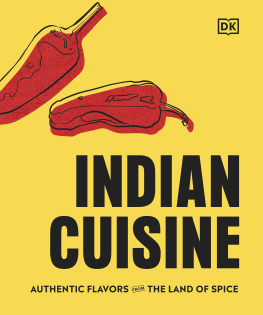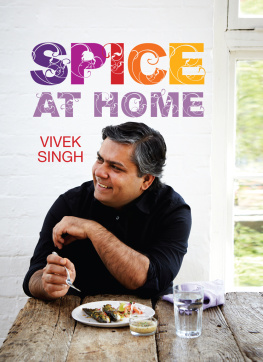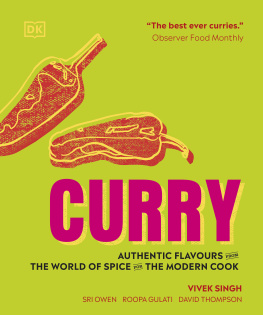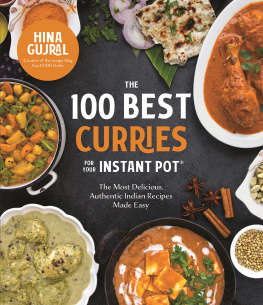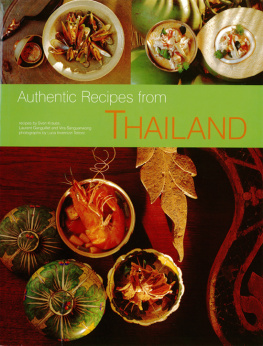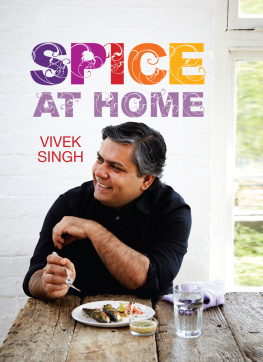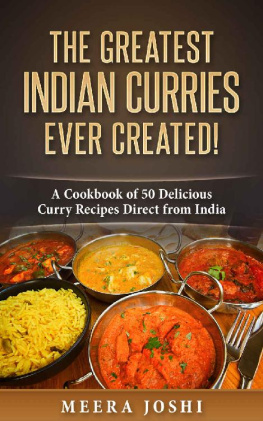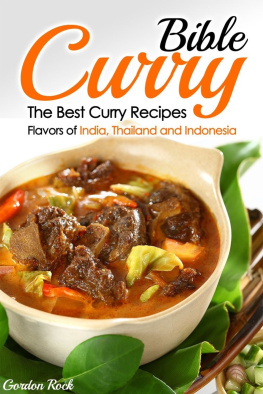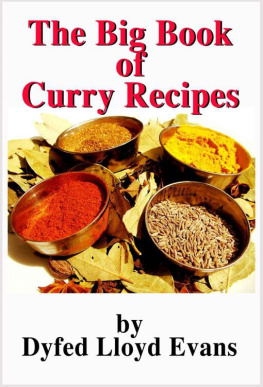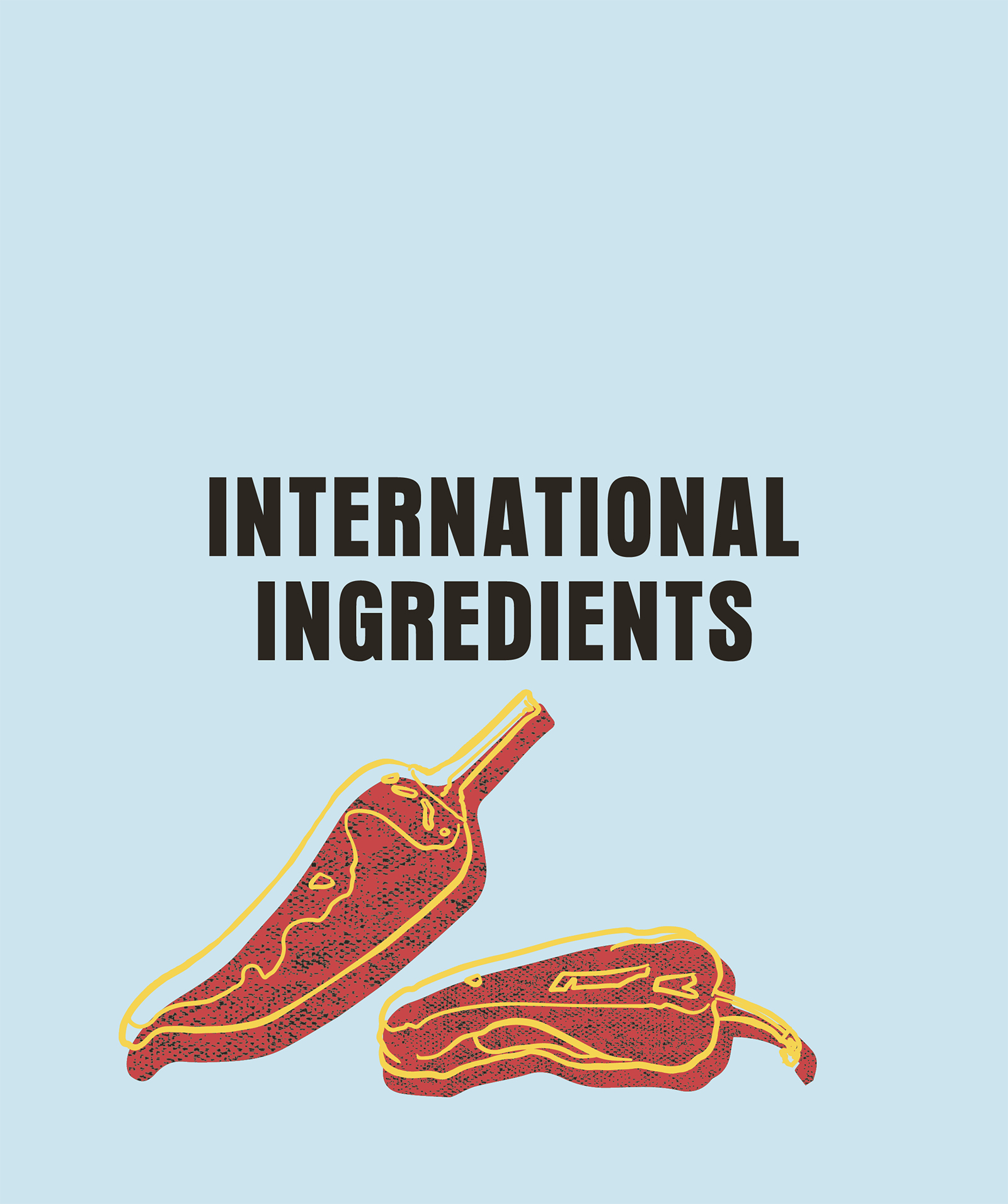FOREWORD
After writing my recipes for this book, I visited India and decided to ask people in different parts of the country to define curry for me. Most people I asked struggled! It is not that no one in India knows curry; rather, it seems that they know it too well to call it something as generic as that. It means different things to different people.
Essentially, any fish, meat, or vegetables cooked with spices in liquid is a curry. The spices and liquid form a sauce that becomes a part of the dish. It is the spices or spice combinations that make each curry different. The cooking method itself varies from simple to sublimein some cases, it could be as simple as simmering in a spiced broth, while in others, it may be a complex combination of frying, pot-roasting, and braising.
What is amazing is that, with time, this cooking style has traveled across the globe and exists in varied shapes and forms in so many different parts of the world. This is thanks to a migrant population that carried its traditional way of food and life with it. In fact, the journey of curry and its adaptability to its new environment plays an integral part in its success story.
While looking at the set of recipes in the book some 14 years after its first edition, I am delighted to be reminded of so many seminal curries, important cornerstones and classics of this genre of cooking that already feature in this book. Yes, 14 years is a long time, and trends have changed. There is a renewed appetite for vegetarian, vegan, and healthy options and a lot more interest, awareness, and understanding of the health benefits of spice. This book has an array of healthy, nourishing curries, as well as a balance of rich, indulgent dishes.
Indian Cuisine is a compilation of curry recipes like no other. What you will find in the pages to follow are some of the best recipes from different parts of the world, contributed by some of the leading experts from those regions.
Vivek Singh
2020
NORTH INDIA
The cooking of northern India has its roots in Persia, where the tandoor originated. The tandoor was brought to India by the Mughals, Muslim invaders who ruled most of India for almost 200 years, until the early 1700s. With the arrival of the tandoor began the great phenomenon of tandoori cooking, which has spread all over the world and, with the curry, come to broadly represent Indian cuisine.
Under some Mughal rulers, great levels of culinary sophistication were achieved. There were periods during which cooking flourished and its practitioners were nurtured like artists, enjoying a status similar to celebrity chefs today. Vast sums of money were spent on kitchens run by skilled master chefs, or rakabdar , as they were called. Each ruler aspired to outdo the other, in hospitality and in the dishes his chefs devised.
From this, it might seem as if all of North Indian cooking was influenced by Mughal rulers alone, but this could not be further from the truth. Like every cuisine, the cooking of a country or region is shaped by what grows there, the seasons, the climate, and the availability of ingredients, as well as religious and socioeconomic factors.
Rulers in some parts of northern India made great efforts to preserve their own culture and identity. They included the Rajput rulers from Rajasthan, who were avid hunters of deer, wild boar, partridges, and sand grouse, which is why this region has a fine tradition of game curries. In this arid desert climate, little grows, and cooking is earthy and rustic. Dried vegetables, roots, berries, and fruits are more common than fresh ones. Sangri beans, which need little water to grow, are much eaten. Rather than cattle and buffalo, goat and lamb are reared for both milk and meat. Yogurt is used for cooking and as a drink, as it has a cooling effect on the body. Chickpeas, corn, and millet are the staples here, unlike the rest of the country. In such a dry climate this makes sense, because consumption of chickpea flour and cornmeal helps the body retain water.
Punjab, Delhi, and the rest of the north are relatively much better off in terms of fertile land, kinder climate, and better irrigation as a result of the five rivers that feed the region. This is a land of plenty, and plenty of milk, cream, butter, and other milk products are used; fresh vegetables, such as spinach, mustard greens, and fenugreek, are abundant; wheat is grown; and lamb and chicken are reared. Just about the best of everything is available and is used in the cooking in this region. The tandoor has had a major impact on the way of life hereeven today, most households have a tandoori oven tucked away in their courtyard. If not, the village has a communal tandoor , where women will gather at midday or early evening to make their bread or simply exchange news and gossip. The mighty tandoor is so much more than just a means of cooking foodit is an essential part of the fabric of life in this region.
Bengal and the eastern states have very fertile land in the plains, as the Ganges River brings with it the rich soil from the north. The climate is mild, and monsoons mean that two crops can be harvested each year. One of them is rice. Local vegetables are plentiful; mustard grows in abundance, so mustard seeds and oil are used in cooking. With the proximity to the sea, fish is frequently used in Bengali curries.
When the British arrived in India, they made Kolkataor Calcutta, as it was formerly knowntheir headquarters. As a result, British influences can be seen in some Bengali dishes (and vice versa). Kedgeree and Bengali vegetable chops are just two examples of the crossover of cultures.
Today in northern India, 65 percent of the population is vegetarian, which explains why there is such a wide variety of vegetarian curries in the Indian culinary repertoire. The majority of North Indians are Hindus and Muslims, followed by Sikhs and those of other religions. Because cows are sacred to Hindus and pork is banned in the Muslim faith, beef and pork are rarely eaten.
While history, geography, and religion have all played an important role in shaping North Indian cuisine, there is one other important aspectwithout which no cuisine can develop and surviveand that is creativity. And it is creativity that has enabled North Indian curries to travel all around the world, finding new homes wherever Indian migrants have settled. In adapting recipes to what is available locally, new curries have been created, but they are still identifiable as North Indian in their essence.

